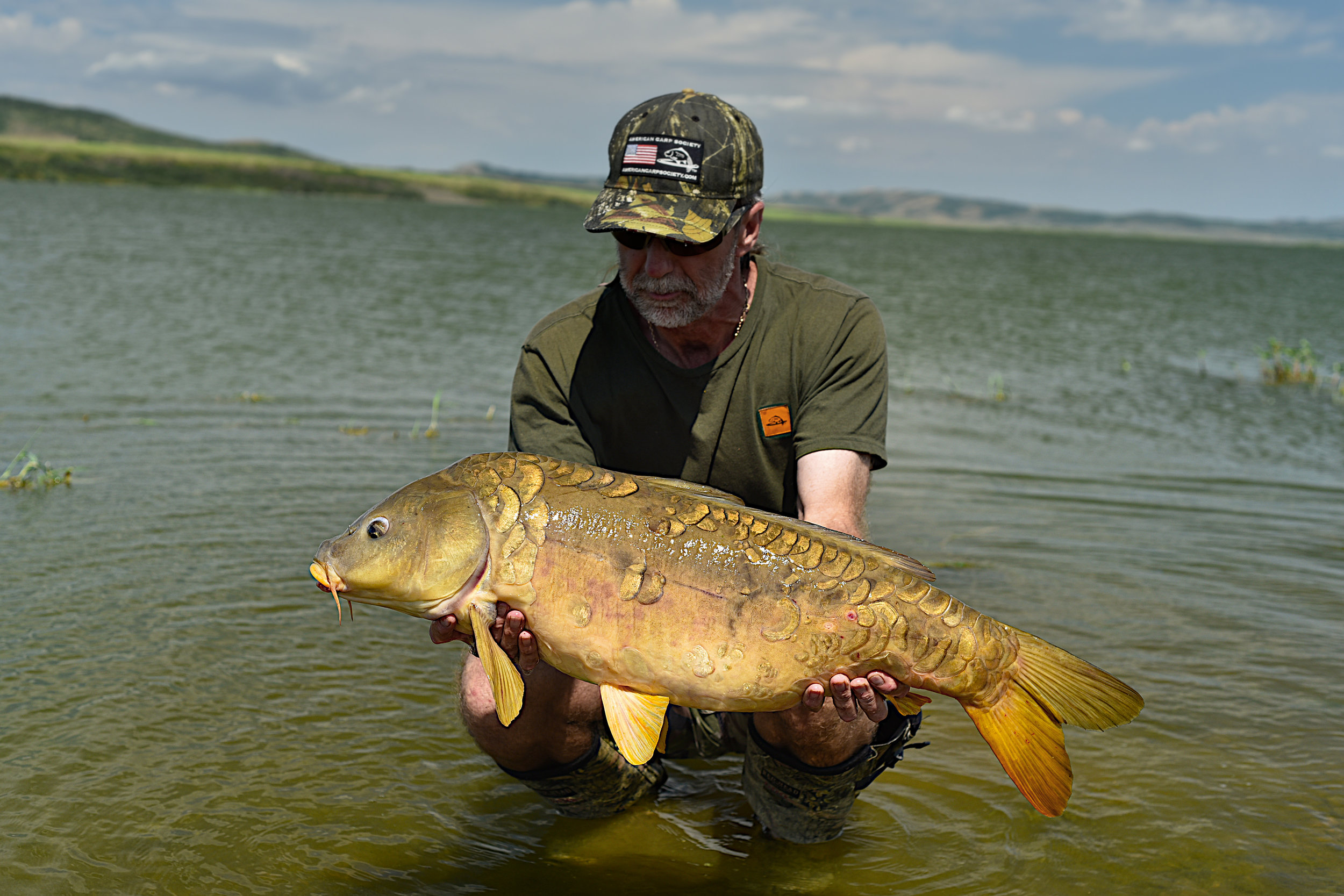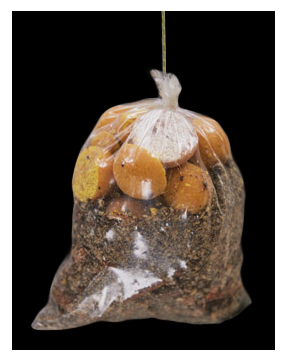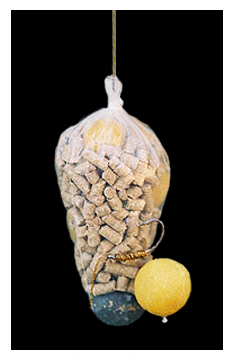The use of PVA in Carp Angling
PVA or Polyvinyl alcohol is a product originally designed for use in hospitals for "soluble" laundry bags that dissolved in water. Its chemical makeup is -CH2CHOH- and is also known as Polyvinyl and Ethanol Homopolymer.
Being soluble, it therefore has the qualities of being able to dispense bait in water and with the added benefits of being bio-degradable and ecologically friendly, the Carping fraternity has embraced this product over the last 15-20 years as an excellent means of accurately presenting a ’concentrated’ pile of bait to any cast-able distance.
There are many forms of PVA available on the market today for Carp Anglers to choose from including ‘solid’ PVA bags, which come in various shapes and sizes and are an excellent choice for adding liquid oil attractants to and ‘Webbing’ style PVA that can be used for a very small ‘package of bait’ presentation around a hook-bait.
There is also PVA ‘Tape’ and ‘String’ that is used as well. All styles of product are available from several different manufacturers.
Much like fishing ‘The Method’ the use of PVA can greatly enhance the chances of accurately presenting an offering of bait to a very small area. However, PVA has the added benefit of being able to dispense pure particles, pellets, liquids, or boilies without the need for a breadcrumb mix to ‘bind together’ the baits of choice to make them cast-able, thus giving this method of presentation a little more diversity than either ‘The Method,’ Pack Baits or the use of a ‘Spod.’
The other advantage with using PVA is that it is a water-soluble product meaning that other non-water based liquids can be placed within a ‘solid’ bag and not ‘melt’ it.
As shown to the right, Hemp oil is a favorite of ours as well as many other of the liquid attractants currently available on the market. Also, notice the PVA nugget placed on the hook to aid the presentation (see explanation in the next paragraph).
Below we will go into a few common examples of how PVA is used by the Carp Angler. This is by no means a definitive list of uses. There are many approaches that you can take with PVA and the possibilities are endless when using this method of presentation.
When using a solid PVA bag we recommend cutting a small corner of the bag and passing your hook-length through the hole. (If you are using ‘distance’ bags the hole will already be in place at the bottom of the bag.)
Follow this by placing your weight over the hole (obviously, you need to make sure that it is just a small enough hole to pass your hook-length through so the weight doesn’t fall through also) and then by placing your bag contents in the bag.
Slightly lick the top of the bag and twist. You may want to take a length of PVA tape or string and wrap it around the top of the bag a few times for added security.
Tie off with a simple overhand knot. Pierce the bag several times with a baiting needle to allow the air to escape when it hits the water.
Then take your hook and gently ‘Knick’ it in the side of the bag as shown in the photo above (You also have the option of placing a PVA nugget on the hook at this point… this will not only protect the hook point from becoming entangled but will also signal to you the exact positioning of your bag once cast because when the nugget melts from around the hook it will immediately float to the surface.)
This will stop the hook-length from getting tangled on the cast and will also avoid the tangles associated by placing the hook-length ‘in’ the bag. The softer braided hook-lengths are notorious for this. When the bag melts the presentation on the bed of the lake would look something like the picture below. This is a pile of bait that hopefully the carp will just ‘hoover up’ taking all the free offerings and the hook bait in at once.
The time it will take PVA to break down in water will depend on several factors including the water temperature as well as the thickness of the PVA being used. The colder the water temperature the longer the PVA will take to break down.
The thicker walls of a ‘solid’ PVA bag will break down in water much slower than ‘webbing’ type PVA also. It is worth remembering when using a solid PVA bag to pierce the outside of the bag with a baiting needle as this will assist in the breakdown time and help to ensure that the bag doesn’t float if you’re using a light weight and buoyant bag contents, such as bread.
You may also want to consider putting a few stones into the bag if it is a large bag to make sure that it sinks immediately it hits the water.
Again, the size and shape of the bag will be determined upon the intended use. A small triangular shaped’ distance bag’ can be cast to well over 100yds with the correct tackle and if this is where you see a lone big fish crash or show itself, it may well be the choice of presentation that you need.
On the other hand, if you have a reed lined margin near you for an overnight session a larger rectangle bag can be used where you do not need the aerodynamics of the smaller bag to cast, and wish to present a decent sized ‘dinner-plate’ for the carp with maybe some oil attractant?
Again, the possibilities are numerous, let’s take an example: You arrive to a new water and see a large fish crashing out at distance.
We have found the following to be a very effective method of presentation with a small ‘distance ‘type PVA bag in this situation.
If the fish in your swim are at varying layers within the water a great and very simple presentation using PVA to draw them down to your hook-bait is to use various food offerings in the bag that will occupy the three levels within the body of water:
1. Upper
2. Mid
3. Lower
For example, soaked and boiled Maize or whole kernel ‘deer corn’ for the hook-bait and lower level free offerings and powdered milk and pieces of both bread and bread-crust for the mid and upper levels.
The powdered milk acts as a visual attractant once the bag melts and is mixed with the water by forming a ‘cloud’. The various sized pieces of bread will suspend just above the lake-bed and rise to the mid-level of the water where they will suspend, and the pieces of crust will float to the surface.
Any fish in the upper levels of the water will be drawn to the area where the hook-bait is placed.
Another option may be that you hook a readymade ‘web-tube’ of boilies directly on the hook or use some PVA tape or String for a ‘stringer’ type presentation by piercing 4 or 5 boilies with a baiting needle and threading them onto the tape or string.
Don’t forget to leave a small gap between each of the boilies on the string or tape so that the lake water can easily dissolve the PVA tape/string. When it reaches, the lake bed the webbing will ‘explode’ or the PVA String will dissolve and you will have your hook bait surrounded by 4 or 5 other randomly placed baits.
PVA products are an excellent tool to have if used correctly with your carp angling. Make sure that you use the right presentation for the correct situation and remember a PVA bag will only introduce a certain amount of bait to one area. You are looking for one run and one fish.
Shown below are some of the PVA products available on today's market:
PVA Funnel Web, net bagging material on a filling tube.
PVA Nuggets
PVA String & Tape
Finally, two very popular shapes and sizes of the solid, PVA bags.



